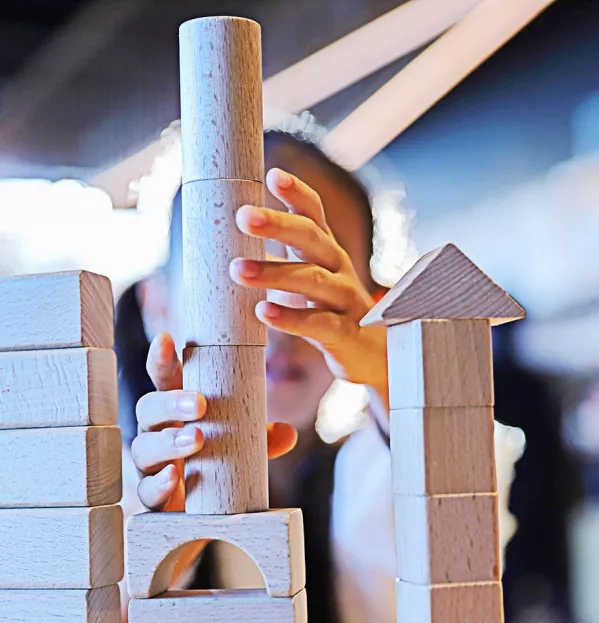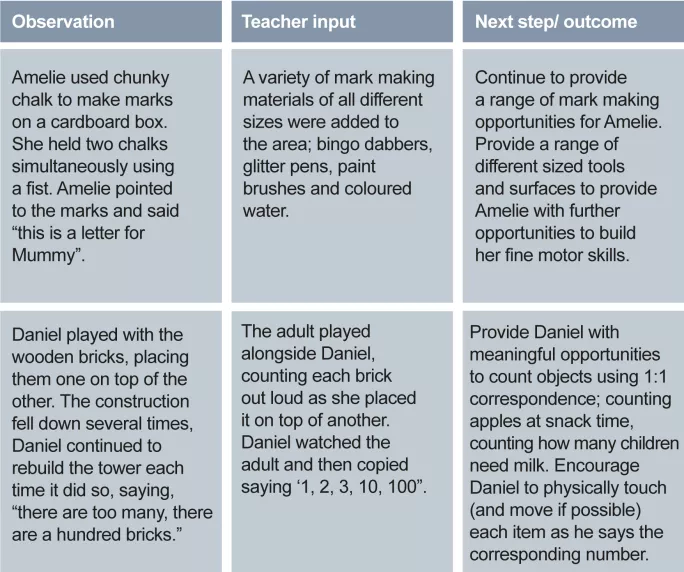- Home
- Teaching & Learning
- Early Years
- EYFS: How to use ‘in the moment planning’
EYFS: How to use ‘in the moment planning’

Relationships are at the centre of everything that we do in education. But how far do we keep this in mind when sitting down to write a scheme of work or to plan our lessons for the week?
It can sometimes feel like our planning is to please Ofsted or to demonstrate to senior leaders how we are ensuring that children meet their “next steps”. But our pupils deserve better than this.
In the early years, children should be at the heart of the planning process, and “in the moment planning” (ITMP) can help to make this a reality.
What is ‘in the moment planning’?
ITMP is a child-led approach in which practitioners identify teachable moments as children play and respond to the spontaneous interest that a child demonstrates.
It became something of a buzz phrase in EYFS a few years ago, but the essence of the approach is actually nothing new. When I first qualified, more than 20 years ago, guidance was minimal and downloadable lesson plans did not exist. Our job was to mould the curriculum around children’s needs and interests.
Pre-made lesson plans do have their place. Teacher workload has increased dramatically in the past two decades, and these plans can be life-savers at times.
But these resources don’t acknowledge the fact that Jack has just got a baby sister and so is feeling a little pushed out, or that Molly is obsessed with dinosaurs and refuses to engage in anything unless she is pretending to be one.
Read more:
- Why post-Covid education needs play
- How to teach letter formation
- Reception baseline: wrong time, wrong data, wrong idea?
Ultimately, planning is most effective when it recognises the needs of the child. So, what can EYFS teachers do to move away from structured activities and towards planning “in the moment”?
There are four main steps to the process.
‘In the moment planning’ in EYFS
1. Get your environment right
Creating a purposeful environment that promotes exploration and curiosity is essential when encouraging children to take the lead in their own learning.
Classrooms are busy places and they can quite easily become caves of clutter, but unnecessary clutter doesn’t lend itself to an environment that stimulates excitement and curiosity.
This means that you need to be ruthless. Consider recycling or donating any resources that you have not used in the past 12 months.
Displaying a range of interesting resources that will spark a child’s curiosity in a well-organised manner will allow the room to have purpose and make space for meaningful learning to take place.
This aspect of ITMP took me quite a while to get used to because I was trained to present perfect tuff trays and immaculate role-play areas. However, ITMP requires resources to be readily available for children to explore at will, instead of activities being set up by a well-intentioned adult.
2. Take time to observe
When planning in the moment, it is essential that we allow the child to choose where they want to explore, rather than guiding them towards a certain activity. As the observer, we must follow their lead.
It’s often at this point that we get “itchy feet” and want to join in and immediately extend the learning possibilities. However, stepping back and simply observing what the child can do is an essential part of the process.
At this point, you may make a few notes to act as a reminder later on, but writing endless notes or making lengthy video recordings are not essential and will result in you missing some of the magic that is taking place.
Ofsted is urging us to move away from unnecessary paperwork and be more present in the moment. Many teachers fear that by doing this, it may appear to any senior leaders who pass by that they are simply doing nothing.
If this is something you’re worried about, invite members of the senior leadership team into your classroom to share the amazing child-centred learning that is happening. Quite often leaders just haven’t yet had the opportunity to fully experience how learning happens in the early years.
3. Plan next steps
At this stage, knowing your children and being confident in your ability is key. You need to trust your instincts in order to spot “teachable moments” and recognise when is the right time to intervene in a child’s play.
Many of us have been trained to think that meaningful learning can only happen when children are sat next to us at a table, engaging in an adult-led activity. But this isn’t the case.
After observing what the child has chosen to do, ask yourself, “What learning can you see happening?”
Observe for a little longer and use your knowledge of both the Development Matters guidance and of the child to support them, while maintaining their engagement and motivation in their play.
Open-ended questions are a fantastic tool for moving learning forward, but this stage may not involve any talking at all. Adding a provocation to the area may be all that is needed to inspire that “next step” for the child.
4. Document the process
The evidencing stage is probably the biggest reason why many shy away from ITMP. The security blanket of learning journals and extensive evidencing software can be difficult to step away from.
The key here is to start simple. For example, the template below is based around three key areas: observation, teacher input and next steps.

Before embracing ITMP completely, try using this template with four or five children in your setting. See how this model of record keeping works for you, and adapt the sections if necessary.
As long as you and the other staff in your room have a way to communicate the process and what progress a child is making, then ITMP can be a fantastic tool for engaging children in meaningful and engaging learning.
Michelle Windridge is a lecturer in education at University College Birmingham, and a former assistant headteacher and EYFS aspiration leader
You need a Tes subscription to read this article
Subscribe now to read this article and get other subscriber-only content:
- Unlimited access to all Tes magazine content
- Exclusive subscriber-only stories
- Award-winning email newsletters
Already a subscriber? Log in
You need a subscription to read this article
Subscribe now to read this article and get other subscriber-only content, including:
- Unlimited access to all Tes magazine content
- Exclusive subscriber-only stories
- Award-winning email newsletters



